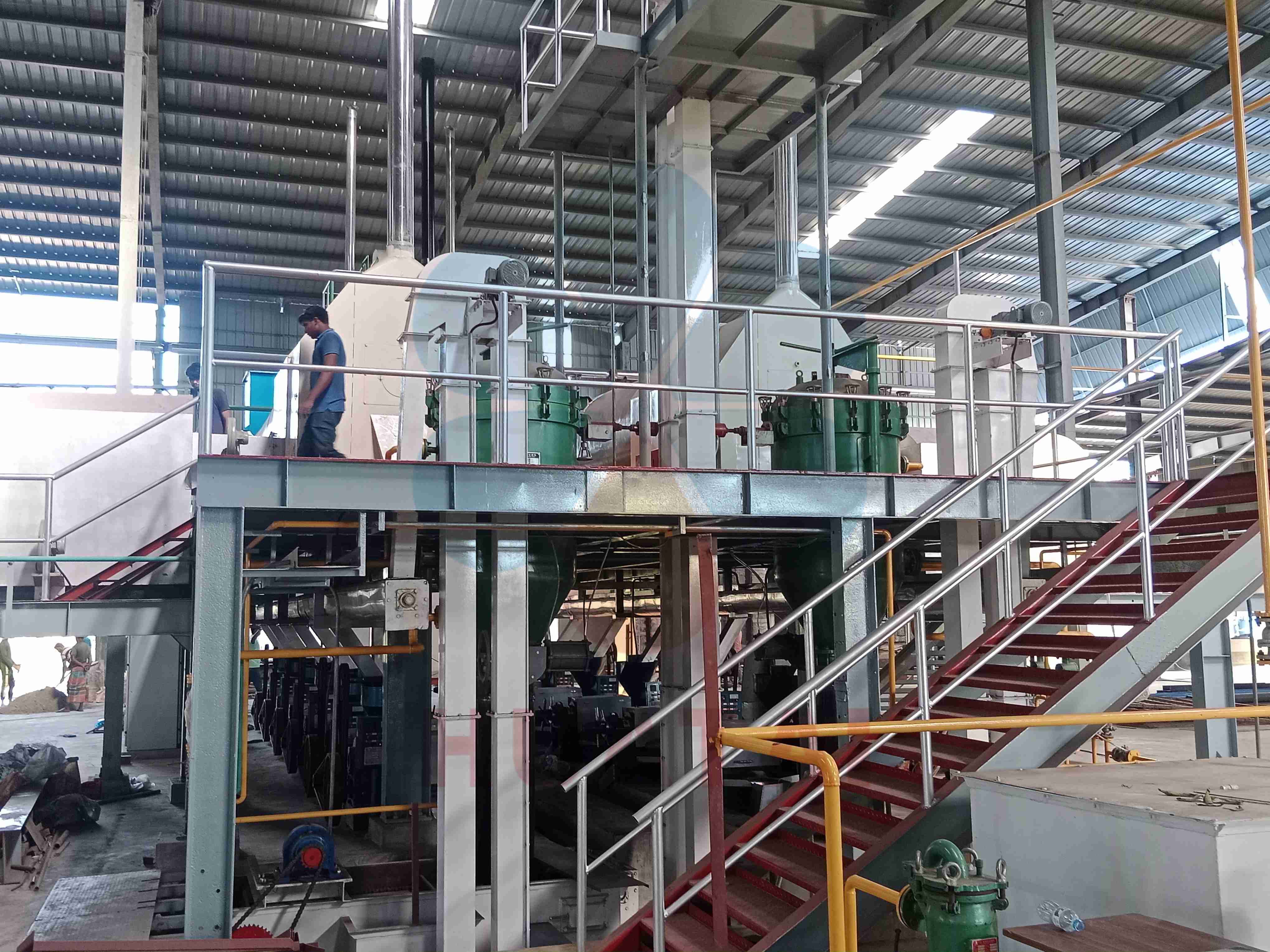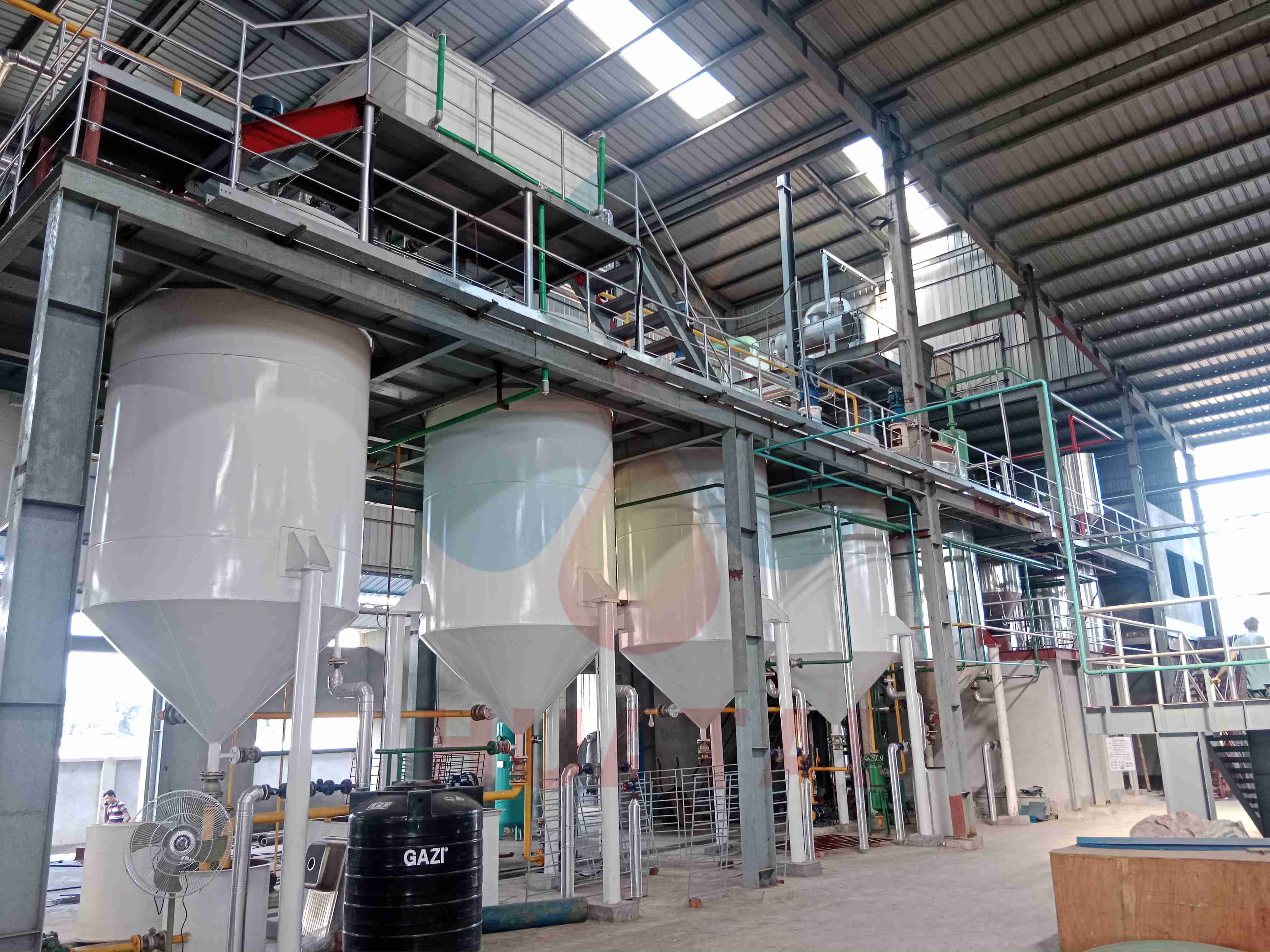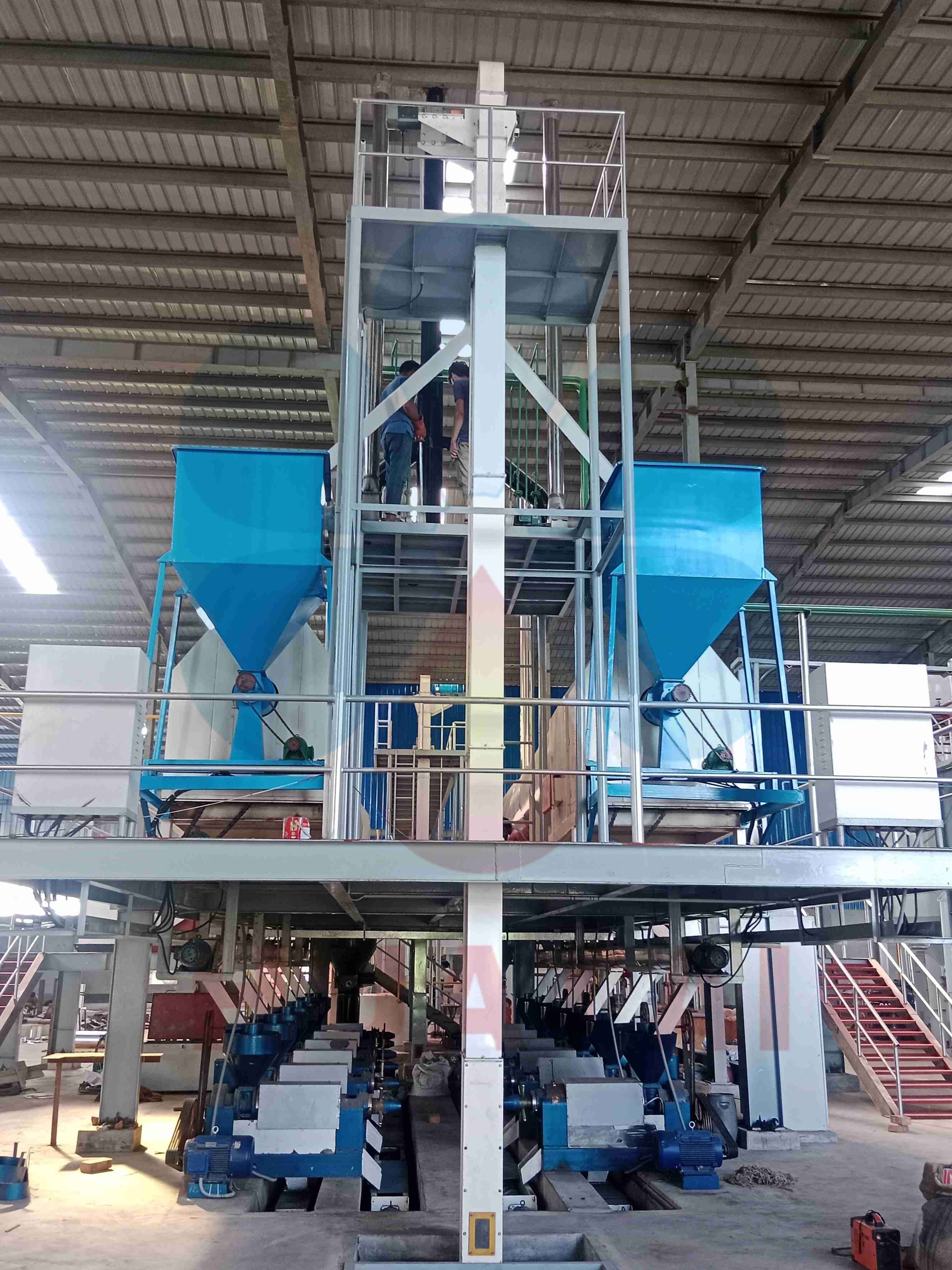Sesame oil is a type of edible oil extracted from sesame seeds, known for its rich roasted aroma. As a common seasoning in daily life, its strong flavor is highly appreciated by consumers. Sesame oil contains essential fatty acids such as linoleic acid and oleic acid. Due to its unique and intense flavor, sesame oil holds an important place in the diets of Chinese people.
Sesame oil can be categorized into small-mill sesame oil, pressed sesame oil, and extracted sesame oil based on production methods. To retain the flavor and nutrients of sesame oil, most oil factories use the first two methods for production. However, sesame cakes left after pressing still contain a high residual oil rate, which affects the quality of the cake meal and results in resource wastage for oil factories. To improve oil extraction rates, large-scale oil factories can use extraction equipment to recover the remaining oil from sesame cakes.

The extraction oil process involves solvents fully contacting oil materials within an extractor, dissolving the oil to produce mixed oil. Solvents are then recovered through evaporation, desolventizing, and condensation processes to produce extracted sesame oil.
Extracted sesame oil contains not only impurities but also residual solvents, so it must undergo a series of refining treatments like decolorization and deodorization to become safe for consumption. Refining equipment removes impurities, solvent residues, harmful substances, and other materials that affect the quality of the oil.
The refining process for sesame oil includes the following stages: Extracted crude sesame oil → Degumming and neutralization → Deacidification → Decolorization → Deodorization → Dewaxing → Finished sesame oil
Degumming: Removes colloidal impurities like phospholipids and proteins using hydrophilic properties, by adding electrolytic aqueous solutions that aggregate and settle impurities for separation.
Deacidification: Neutralizes free fatty acids in crude oil using alkali solutions to reduce acidity. The process forms fatty acid salts and water, separating soap stock from oil through centrifugal action.
Decolorization: Removes pigments in the oil through adsorption or chemical reactions, enhancing oil clarity and color.
Deodorization: Eliminates unpleasant odors using distillation or adsorption methods to improve flavor and quality.
Dewaxing: A vital step for sesame oil production, as waxes from plant materials cannot be absorbed by humans and may cause cloudiness or solidification in low temperatures. The process crystallizes waxes at low temperatures and separates them from oil through filtration.
Refining equipment plays an essential role in ensuring the quality and safety of edible oils. It features high automation, user-friendly operation, strong processing capacity, and effective performance. Regular maintenance and testing are necessary to ensure equipment runs smoothly and meets standards for processed oil quality.

The extraction process offers advantages like high efficiency, large output, low residual oil in cake meal, and improved sesame oil yield. Extracted sesame oil must be refined before consumption as its flavor and nutrients are inferior to sesame oil produced by pressing. Most raw materials used for extraction are sesame cakes from pressing or pre-pressing processes, effectively increasing oil yield and generating more profits for oil factories.
Investment in oil machinery equipment is high, requiring specific factory environments and safety standards. Huatai Oil Machinery Company provides strong capabilities, reliable quality, comprehensive services, and affordable pricing. We welcome users to visit Huatai in Henan for purchase and inspection.

Huatai Oil Machinery provides good quality oil mill plant, time & fast delivery, perfect after-sale services, and reasonable price, contact us!
Website: https://www.huataioilmachine.com/Copyright @ Henan Huatai Cereals And Oils Machinery Co.,Ltd.